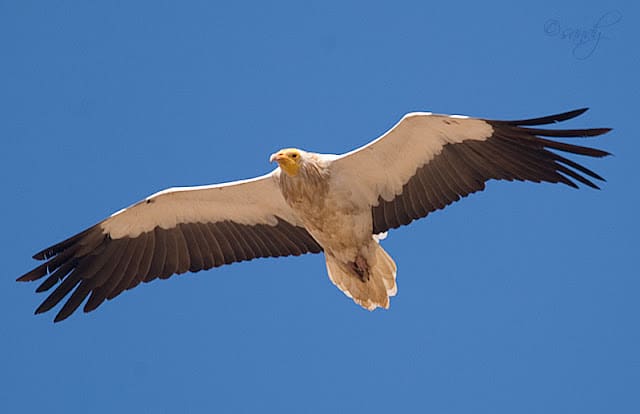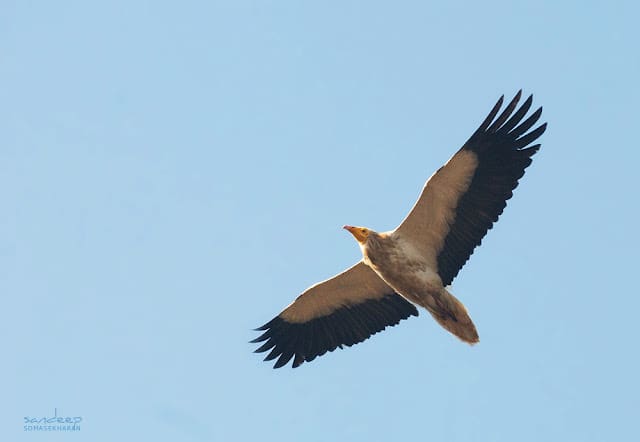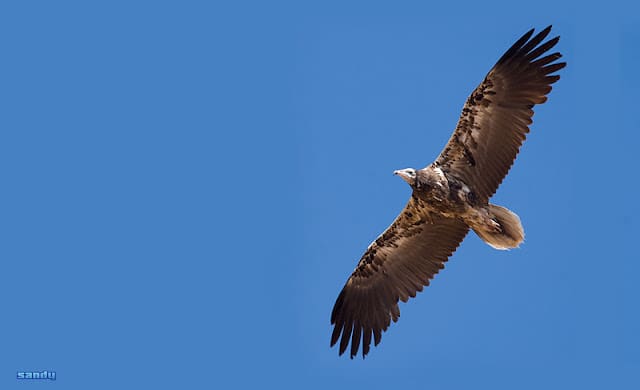The Egyptian Vulture (Neophron percnopterus), also known as White Scavenger Vulture and Pharaoh’s Chicken, is easily distinguishable thanks to its unusual plumage. Its large size, creamy white plumage, hook-shaped beak, and yellow face are diagnostic. In flight, the undersides of the wings show a clear demarcation between the black flight feathers and the white underside coverts. They are often seen circling high above dumping yards. A pair is seen regularly near the Infosys campus in Mysore where I work.

Juveniles have dark brown plumage and a paler face.
These vultures are often found near landfills and large trash piles, where they scavenge for carrion and offal. At times they dig their beaks into human and animal excrement – both to get at the grubs they harbour, as well as for the ‘pudding’ itself.
 All vultures play a critical role as scavengers in the food chain. However, a massive decline in their numbers has seen their place left vacant or taken up by dogs and crows. As with other vultures, their numbers have seen an alarming decline in the last two decades due to poisoning by the veterinary drug Diclofenac, which they ingest while consuming livestock carcasses. The drug has been found to cause renal failure in the birds and has been held responsible for the global decline of vultures. Once common in our skies, Egyptian Vultures are now classified as ‘EN’- Endangered in the IUCN Red List (BirdLife Species Factsheet).
All vultures play a critical role as scavengers in the food chain. However, a massive decline in their numbers has seen their place left vacant or taken up by dogs and crows. As with other vultures, their numbers have seen an alarming decline in the last two decades due to poisoning by the veterinary drug Diclofenac, which they ingest while consuming livestock carcasses. The drug has been found to cause renal failure in the birds and has been held responsible for the global decline of vultures. Once common in our skies, Egyptian Vultures are now classified as ‘EN’- Endangered in the IUCN Red List (BirdLife Species Factsheet).
Text and photographs by Sandeep Somasekharan
- Costa Rica Diaries – Parting Gifts - May 5, 2024
- Costa Rica Day 6 – Resplendent Quetzal: Part Bird, Part God and Full-Time Economy Driver - April 17, 2024
- Costa Rica Day 5 – Toucan Trees and Wild Dreams Coming True - March 22, 2024

